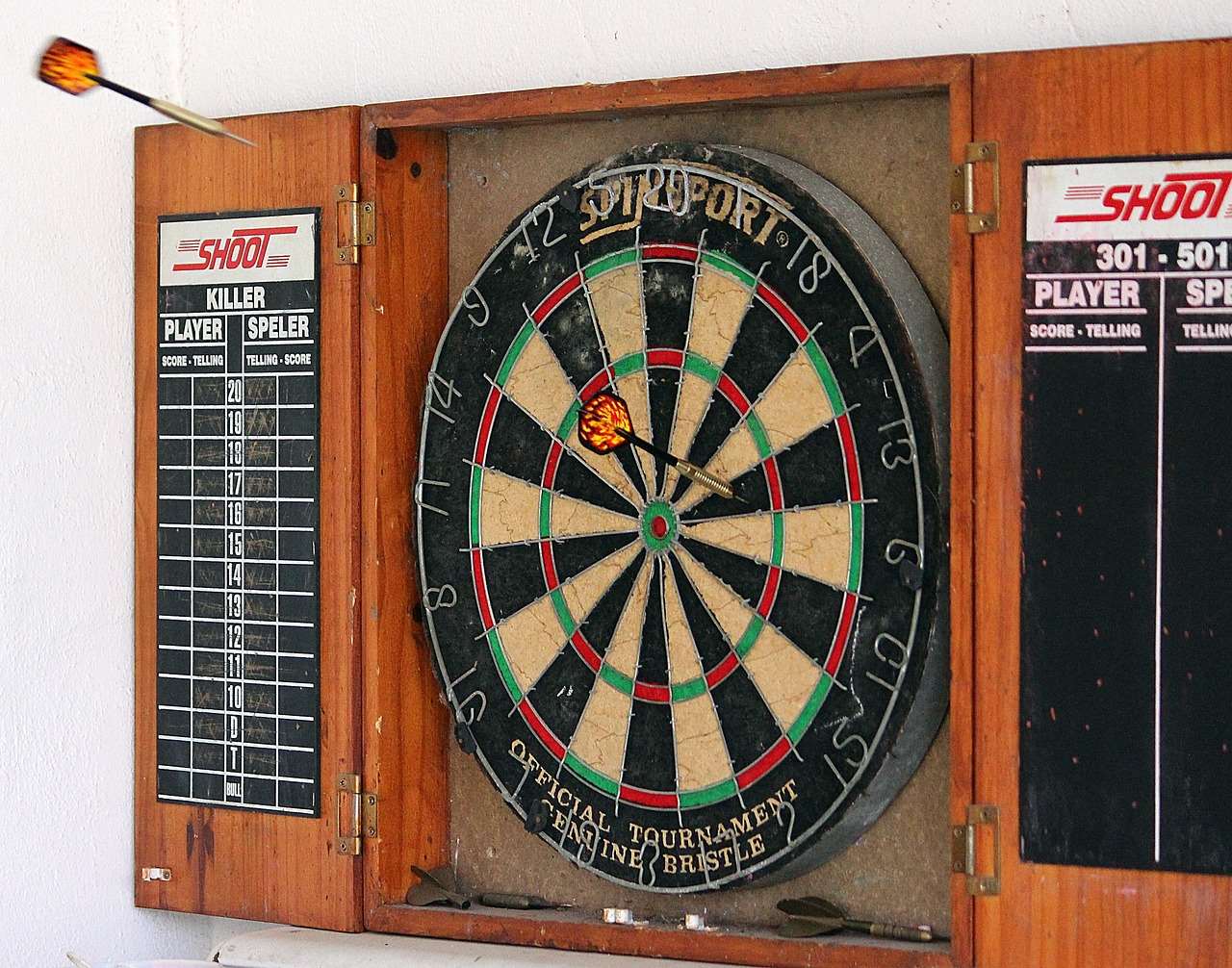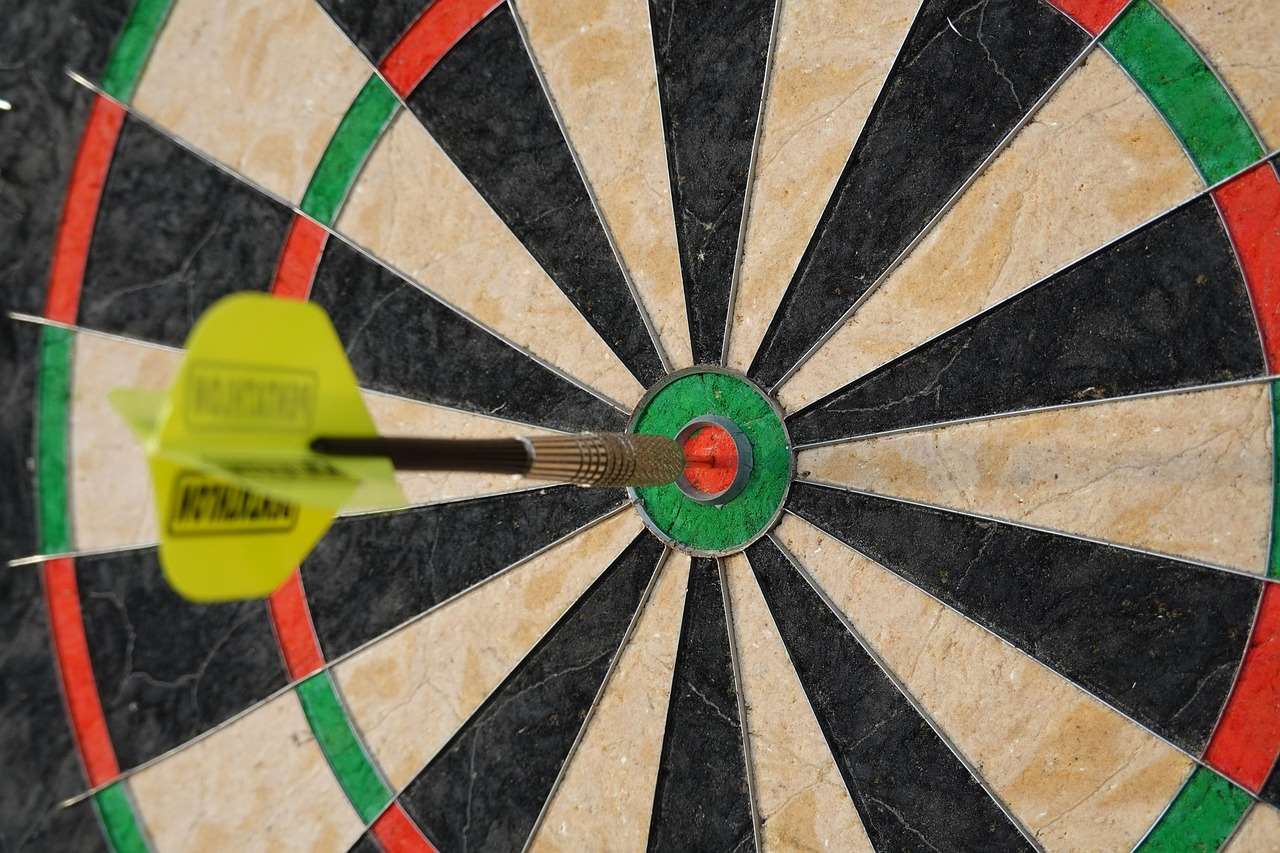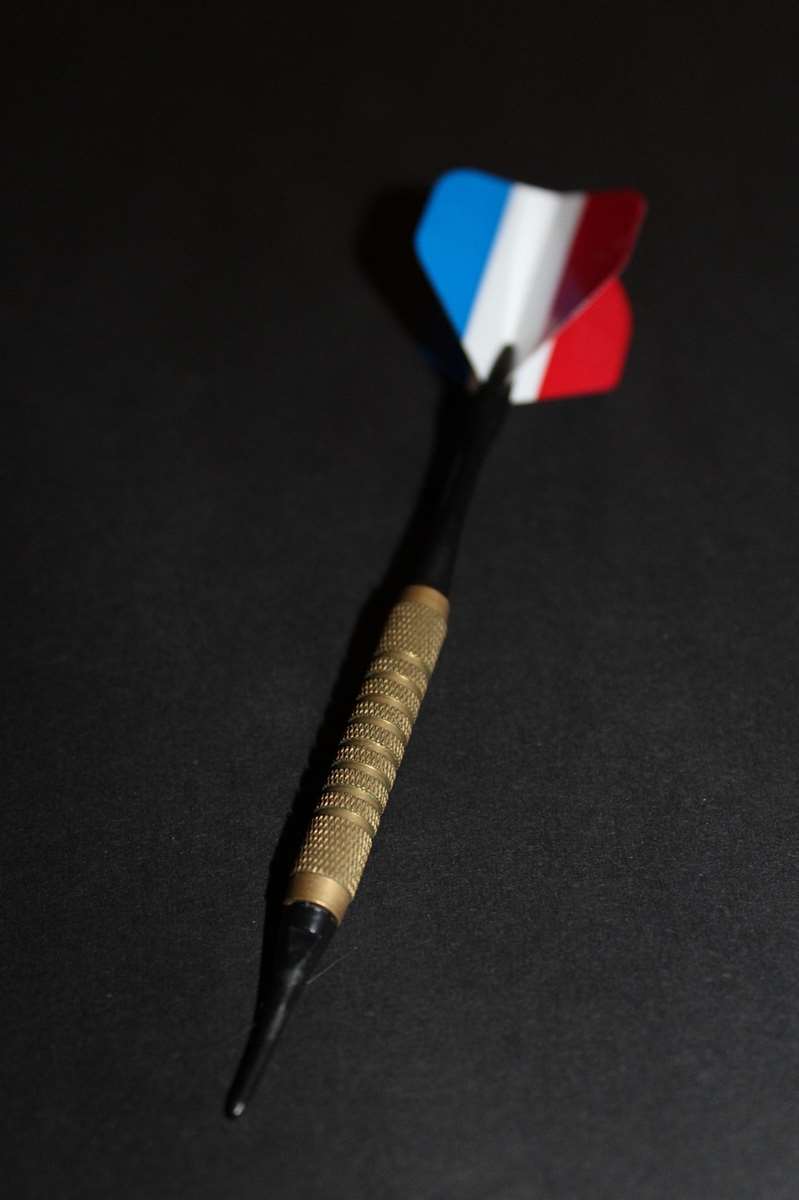The short answer is: generally, yes, **it is bad etiquette to watch your opponent throw intensely**. This behavior can be interpreted as disrespectful, intimidating, or even an attempt to distract them. In this article, we’ll explore the nuances of dart throwing etiquette, acceptable behavior, and why maintaining good sportsmanship is crucial in this precision sport.
⚠️ Still Using Pen & Paper (or a Chalkboard)?! ⚠️
Step into the future! The Dart Counter App handles all the scoring, suggests checkouts, and tracks your stats automatically. It's easier than you think!
Try the Smart Dart Counter App FREE!Ready for an upgrade? Click above!
Understanding Dart Throwing Etiquette: Is it bad etiquette to watch your opponent throw intensely?
When stepping up to the oche, **dart players** enter a mental zone. The level of focus required to consistently hit the target is immense. Any perceived disruption, including intensely observing them, can throw off their rhythm and concentration. Understanding the unspoken rules of dart throwing, the etiquette involved, can contribute significantly to a positive and enjoyable experience for everyone involved.
Etiquette in darts, like in many sports, is about respecting your opponent and the game itself. It’s about creating a fair and enjoyable atmosphere for everyone. Breaking these unspoken rules, even unintentionally, can be seen as unsportsmanlike.

Why Intense Observation is Considered Bad Form
There are several reasons why watching your opponent throw intensely is frowned upon:
- Intimidation: Staring intensely can be perceived as a deliberate attempt to intimidate your opponent, especially in a competitive setting. This can create an uncomfortable and hostile environment.
- Distraction: Even if unintentional, intense observation can be distracting. The dart player might become self-conscious or feel pressured, impacting their performance.
- Disrespect: It can come across as a lack of respect for your opponent’s skill and concentration. It suggests you are scrutinizing their every move, potentially looking for weaknesses to exploit.
- Unsportsmanlike Conduct: In some cases, it can be interpreted as a form of **gamesmanship** intended to gain an unfair advantage.
Think about it – you’re trying to concentrate on hitting a small target, and you feel someone’s eyes boring into you. It’s naturally unsettling. Good sportsmanship prioritizes creating a level playing field where everyone can perform their best without unnecessary pressure.
Acceptable Behavior During Your Opponent’s Throw
So, what *is* the appropriate behavior while your opponent is throwing? It’s all about creating a respectful and supportive atmosphere.
- Maintain a respectful distance: Stand back from the oche and give your opponent plenty of space.
- Avoid direct eye contact: Looking away or focusing on something else while they throw is generally considered good etiquette.
- Stay quiet: Refrain from talking, making noise, or engaging in any disruptive behavior.
- Be still: Avoid fidgeting or making sudden movements that could distract your opponent.
- Show support (subtly): A nod of acknowledgement after a good throw is acceptable, but avoid excessive cheering or celebration that might be seen as gloating.
Remember, the goal is to allow your opponent to focus without feeling any unnecessary pressure or scrutiny. Following these guidelines will contribute to a more positive and enjoyable **dart game** for everyone.
Exceptions and Nuances to the Rule
While intensely watching your opponent throw is generally discouraged, there are some situations where it might be more acceptable, or at least understandable:
- Learning from their technique: If you are a beginner or trying to improve your own game, observing experienced players can be beneficial. However, it’s essential to do so discreetly and without making them feel uncomfortable. Focus on their overall stance and form, rather than staring intently at the moment of release. You can explore some Basic Darts Fundamentals for Beginners for tips to help you improve your form.
- Professional matches: In high-stakes professional tournaments, players are often under immense pressure and scrutiny. While intense observation might still be frowned upon, it’s often tolerated to a greater extent as part of the competitive environment.
- Friendly matches among close friends: If you are playing with close friends and you know they don’t mind, a little playful banter and observation might be acceptable. However, it’s always best to err on the side of caution and avoid anything that could be interpreted as disrespectful.
The key is to be mindful of the context and your relationship with your opponent. If you are unsure, it’s always best to play it safe and maintain a respectful distance.

Reading Your Opponent: The Art of Subtle Observation
There’s a difference between intensely staring at your opponent during their throw and subtly observing them between turns. While intense observation during the throw is usually considered bad etiquette, **reading your opponent** – observing their overall demeanor, reactions, and strategy – can be a legitimate part of the game.
This involves paying attention to things like:
- Their body language: Are they confident and relaxed, or tense and nervous?
- Their facial expressions: Do they seem pleased or frustrated with their throws?
- Their shot selection: Are they going for big scores or playing it safe?
- Their reactions to your throws: How do they respond when you hit a good score or miss a crucial double?
Gaining insights into your opponent’s mindset and strategy can help you make better decisions and adjust your own game accordingly. However, it’s crucial to do so subtly and respectfully. Avoid staring or making them feel like you are trying to psych them out. It is also important to know how to play Simplified 501 game rules for novice players which is one of the most commonly played dart games.
The Impact of Culture and Regional Differences
Etiquette can vary slightly depending on the region or culture in which you are playing. In some areas, a more relaxed and casual approach might be acceptable, while in others, a stricter adherence to traditional rules is expected.
For example, in some pubs in the UK, a bit of friendly banter and ribbing is common during dart games. However, even in these situations, it’s important to avoid crossing the line into personal insults or disrespectful behavior. Some of these games and parties may even require creative dart rules for parties and social gatherings.

If you are playing in a new or unfamiliar environment, it’s always a good idea to observe the local customs and adapt your behavior accordingly. When in doubt, err on the side of caution and show respect for the traditions of the game.
Consequences of Bad Etiquette
While there might not be formal penalties for bad etiquette in casual dart games, there can be significant consequences:
- Loss of respect: You might damage your reputation and lose the respect of your fellow players.
- Creating a hostile environment: Your behavior could make the game unpleasant for everyone involved.
- Reduced enjoyment: You might find that people are less willing to play with you.
- Formal warnings or penalties: In some organized leagues or tournaments, there might be formal warnings or penalties for unsportsmanlike conduct.
Ultimately, good etiquette is about maintaining a positive and respectful environment for everyone. By adhering to these unspoken rules, you can ensure that dart throwing remains a fun and enjoyable activity for all.
Tips for Improving Your Dart Throwing Etiquette
If you’re not sure whether your behavior is appropriate, here are some tips for improving your dart throwing etiquette:
- Observe experienced players: Pay attention to how they conduct themselves and learn from their example.
- Ask for feedback: Don’t be afraid to ask your fellow players for feedback on your behavior.
- Be mindful of your body language: Avoid making any gestures or expressions that could be interpreted as disrespectful or intimidating.
- Focus on creating a positive environment: Remember that the goal is to have fun and enjoy the game.
- When in doubt, err on the side of caution: If you are unsure whether something is appropriate, it’s always best to avoid it.

The Psychological Impact of Observation
The act of being watched, especially intently, can have a significant psychological impact on a dart player. It can trigger feelings of anxiety, self-consciousness, and pressure, all of which can negatively affect performance. This is why **maintaining a respectful distance** and avoiding intense observation is so important.
Even if the observation is unintentional, the player may still perceive it as a form of judgment or scrutiny. This can lead to overthinking, second-guessing their technique, and ultimately, missing the target. Understanding this psychological impact is crucial for fostering a positive and supportive environment.
Adapting Etiquette for Different Skill Levels
The level of formality and strictness of etiquette might also vary depending on the skill levels of the players involved. In casual games among beginners, a more relaxed and forgiving approach might be acceptable. However, as players become more experienced and competitive, a stricter adherence to etiquette is often expected. You could even consider adapting darts rules for beginners to make the game more enjoyable.

When playing with players of different skill levels, it’s important to be mindful of their experience and expectations. Adapt your behavior accordingly to ensure that everyone feels comfortable and respected. Remember that **good sportsmanship** transcends skill levels and is always appreciated.
Conclusion: Practicing Good Dart Throwing Etiquette
**Is it bad etiquette to watch your opponent throw intensely?** The overwhelming answer is yes. Maintaining good dart throwing etiquette is essential for creating a positive and respectful environment, fostering enjoyment, and ensuring fair play. By avoiding intense observation, being mindful of your body language, and showing respect for your opponent’s concentration, you can contribute to a more enjoyable and rewarding experience for everyone involved.
Remember, darts is a game of skill, precision, and sportsmanship. By adhering to these unspoken rules, you can help to preserve the integrity of the game and promote a positive and inclusive atmosphere. Now go out there, enjoy the game, and remember to be a respectful and considerate opponent! Continue your journey and learn more about Alternative darts rules for home play.
Hi, I’m Dieter, and I created Dartcounter (Dartcounterapp.com). My motivation wasn’t being a darts expert – quite the opposite! When I first started playing, I loved the game but found keeping accurate scores and tracking stats difficult and distracting.
I figured I couldn’t be the only one struggling with this. So, I decided to build a solution: an easy-to-use application that everyone, no matter their experience level, could use to manage scoring effortlessly.
My goal for Dartcounter was simple: let the app handle the numbers – the scoring, the averages, the stats, even checkout suggestions – so players could focus purely on their throw and enjoying the game. It began as a way to solve my own beginner’s problem, and I’m thrilled it has grown into a helpful tool for the wider darts community.